EDA Confidential ...
___________________________________________________________
SAME Forum 2010
by Peggy Aycinena
___________________________________________________________
January 28, 2011
Here's your assignment: At least once before you die, you must go to Sophia Antipolis – and not just as a tourist, but to attend the annual Sophia Antipolis Microelectronics Forum, known as SAME.
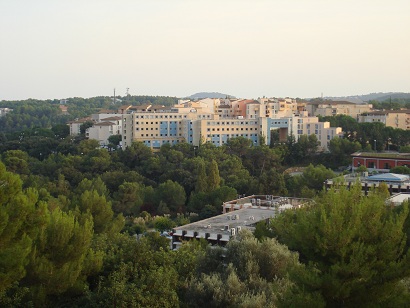
The weather's perfect in September and October on the Cote d'Azure, so what an excellent time to visit. I've been twice now, and my second visit in October 2010 – already understanding a bit about the ecosystem, the setting, and the players involved – was even more fascinating and informative than my first visit in September 2009. [Read about the 2009 experience here.]
The French are not American, and I am clearly not French. Part of the informational aspect of my visits to SAME, therefore, has had to do with peering across the divide – dare I say, chasm – that separates the way the French think about things from the way Americans think about things, and each other.
Some French think Americans are boorish prudes. Some Americans think the French are narcissistic and eat too much cheese. Some French think Americans don't understand great food, or great cinema. Some Americans think the French prize beauty over truth, and still cling to the myth that France is the center of the world. Some French criticize Americans, because they seem to prize truth over beauty, and still cling to the myth that America is the center of the world. Is it any wonder we don't get along?
On the other side of the equation, however, sometimes when one peers across the alleged chasm that separates the French from the Americans, it seems as if there's no chasm at all. These are two highly advanced, technically knowledgeable, globally aware groups of people – both very complex, with a variety of factions at work that influence the arc of each respective society, and both with a great admiration for intelligence, creativity, and ballsiness.
And, both the French and the Americans know that nobody gets anywhere in this fiercely competitive global economy without being bold, outlandish, thinking outside the box, and – most importantly – collaborating, collaborating, and collaborating.
Hence, the French and the Americans should be viewed as more than simple rivals for the hearts and minds of Western Civilization. They should be viewed, instead, as partners in the global economy, competing in some areas, cooperating in others, and coordinating their efforts when joined together under the same corporate or industry umbrella to better understand what great ideas from the other side of the chasm might be useful on their side of that great divide.
Complicated? You betcha, but so is everything else in this Big Bad 21st Century World. And, that's why a trip to Sophia Antipolis will remind you to never forget …
We're all in this alone, together!
******************************
Think globally, Innovate locally …

At SAME 2009, I gave a short, impromptu talk about how one goes about creating an environment that fosters technical innovation, “impromptu” being a relative term. Synopsys' Pierre Bricaud, a member of the SAME Forum Executive Committee, had asked me during the SAME 2009 Conference Dinner on September 22nd to speak briefly on the topic of innovation the following morning at the close of his Executive Panel. I accepted Pierre's invitation, and then scrambled to prepare my slides for the 23rd.
In the case of SAME 2010, happily I received my invitation from Monsieur Bricaud to speak at the Forum well in advance of the event, and had several months to prepare. There was nothing even remotely “impromptu” about my talk on October 7, 2010, as again I addressed the topic of fostering technical innovation with an emphasis on Silicon Valley, and reiterated my 2009 conclusion:
Innovation happens haphazardly, at best, but can certainly be nudged along given certain environmental circumstances:
* A transient, highly educated population
* Great universities in the vicinity
* Respect for intellectual property rights, and lawyers to back them up
* Access to various forms of venture capital
* Less government involvement: taxes, regulations, agenda setting
* Access to global markets to generate revenue for further innovation
* The freedom to try, to fail, to try, to fail, to try, without stigma or shame
My talk challenged the SAME Forum audience to consider whether innovation, in France or in Silicon Valley, is ever as easy as my list would imply? And the answer is – of course not.
But great technologists, great companies, great regions, and great nations must all wrestle with balancing the factors that foster innovation, versus those that do not – whether they be in France, in America, or anywhere else where companies & countries want to be dominant players in the ferociously lucrative semiconductor industry.

So, one of the factors in Silicon Valley that possibly distinguishes it from other high-tech epicenters around the world – and may account for some of the success enjoyed by companies in Northern California – is the last factor in my list. The freedom to try, to fail, to try again, to fail again, to try again, to fail again, and so on – without being shamed into oblivion after the very first failed attempt.
Of course, Silicon Valley is not the only place on earth where this sort of latitude is afforded to players in an industry, but there is a particular level of optimism in “The Valley” that says – we learn from our failures, and hence must be given a chance to try again – which is crucial to what has happened there over the last 50+ years. Similarly, all countries and companies that want to succeed, need to remain vigilant when it comes to promoting and preserving an environment that allows innovation to happen.
[For further discussion, and to see the slides that accompanied my SAME Forum 2010 presentation, please click here.]
******************************
Far from Sophia Antipolis …
SAME Forum 2010 included 2 days of technical sessions, panels, and keynotes on October 6th and 7th, and a day-long bus trip on Friday, October 8th. The trip included visits to the STMicroelectronics fab in Rousset, 90 minutes west of Sophia Antipolis, and the nearby University of Gardanne located even closer to Marseilles. Both the industrial and academic visits were well organized, and terrifically informative for the 40 of us who took the trip.
In Rousset, we had a through-the-hallway-windows tour of STMicro's 200-mm fab that's the latest incarnation of a facility opened there in 1979 by National Semiconductor and Saint Gobain, which was later owned by French Thomson and Italian SGS Microelectronica, and eventually by STMicro.
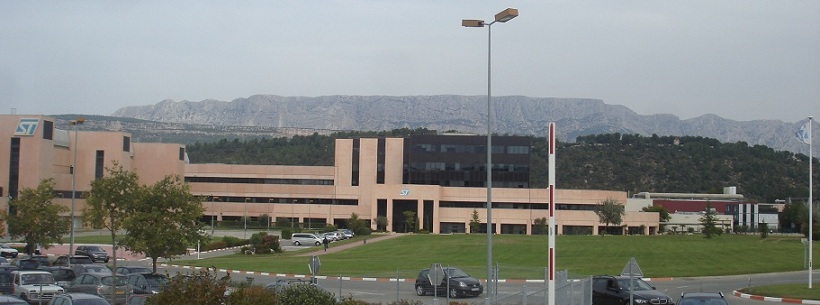
This huge fab has been located at the foot of the looming Montagne Sainte-Victoire for over 30 years, and not surprisingly – along with the several thousand ST employees working in Rousset – one senses an ambiance of stability and longevity in the place. That sensibility was further enhanced by a comment from our STMicro tour guide:
"The economic downturn from mid-2008 to mid-2009 was the steepest fall in demand in the history of our business, the worst year on record. We decided by early 2009 to idle the facility here in Rousset, but by July 2009 we experienced a complete turn-around in demand, the highest upswing in one year on record. So much so, that we had to re-hire some of the employees we had let go [earlier that year]."
Included in our introduction to STMicro at Rousset, our hosts also spent some time tutoring us about ARCSIS, a high-tech collaborative effort with sponsorship from a host of French governmental agencies [too many to name], as well as Atmel, Gemalto, NXP, STMicro, Texas Instruments, and “several small and mid-sized companies, as well as 15 engineering schools, research labs and universities in the area.”
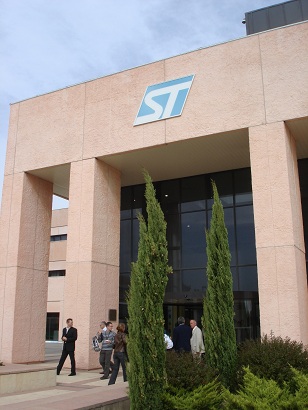
The purpose of ARCSIS is to encourage and coordinate semiconductor innovation in commerce, research and development among its dozens of industrial and academic partners located in the Provence-Alps-Riviera regions of Southern France [PACA], and to serve as a liaison of sorts between PACA, the French National Government, and the European Commission and its wide assortment of technical initiatives. This is a complex network of involvements that takes no small amount of study to fully grasp.
Does ARCSIS work? Does it actually promote innovation and additional success for the various members of the coalition? I don't have answers to those questions, but I would refer to my earlier comments on the differences – both perceived and real – between the French and the American approach to technology and industry.
Organizational bureaucracy is heavily supported in France, far less so than in Silicon Valley, for instance – at least in the semiconductor industry. Naysayers might say that ARCSIS-like bureaucracies promote ponderous vetting procedures, and slow the progress of high-tech initiatives in industry and academia. Alternatively, critics of “Silicon Valley” would be right to point out that the vicious boom-and-bust employment practices that characterize the world of high-tech in Northern California, due in part to a singular lack of involvement on the part of regional, state or federal governments. These are complex issues, not easily sorted out, so we will move on.
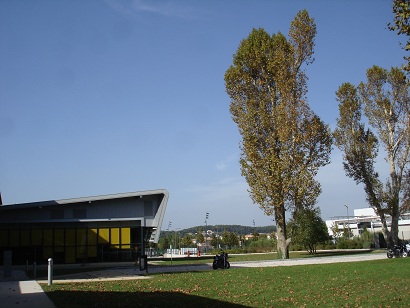
From Rousset on October 8th, our bus then took us to the University of Gardanne and lunch, followed by a 90-minute high-level intro to those issues related to 3D-IC design under study at the university, and among other ARCSIS participants.
Candidly, it was difficult to focus on the speaker given his heavy accent, the October heat, and the deadliest of post-lunch stupors. Nonetheless, it was a good start to understanding 3D – currently one of the hottest topics in chip design.
Following the speaker, we were treated to a marvelous and detailed tour of the ARCSIS-driven "Micro-PackS" micro-packaging R&D fab at the University of Gardanne, complete with the opportunity to don bunny suits, face masks, and shoe covers – always a riotous experience for those of us who do not labor away daily in the sterile environment of manufacturing green rooms. Anytime you get an opportunity to do so, grab it!
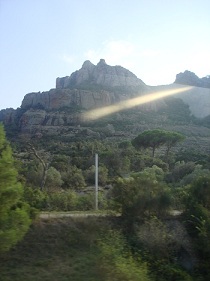
Micro-packaging is not the only topic of interest to ARCSIS, by the way. At Rousset, ARCSIS partners are concerned with the "Characterization Platform" [and] development of methods and tools for the physico-chemical and electrical characterization of technologies based on non-volatile memories.”
While in Sophia Antipolis, ARCSIS partners are studying "Design Platforms", [in particular] the process of designing innovative SOCs, wireless communications and security [with emphasis] on the reuse of blocks of IP.”
Again, does ARCSIS work? Does it actually promote innovation and additional success for the various members of the coalition? Well, consider this question: Did NASA work? Did it promote innovation across a spectrum of industries, all pulling together towards a common goal?
Clearly, there are times in history when regional governments and industry can be hellaciously productive when they link hands. It's the figuring out how to do that linkage – building in enough opportunity for commercial rewards and regional success – that's the real tough nut to crack. The folks at ARCSIS clearly feel they've solved this problem. Time will tell if they are right.
******************************
October 6th & 7th at SAME 2010 …
As is the case with any technical conference, it's hard to capture every word uttered, every wisdom offered, so the following reflects just some of the highlights of SAME Forum 2010.
** October 6th Keynote
SAME Forum 2010 General Chair Jacques-Olivier Pedoir opened the conference by introducing Texas Instruments Principal Fellow Gene Frantz. Frantz started his keynote with a nod to important French contributions to R&D in wireless communication. He then defined two different types of innovation ...
* When Technology drives the Market
* When the Market drives the Technology
He also noted the three P's of innovation, metrics which can vary depending on the product's market ...
* Price
* Performance
* Power dissipation
Frantz emphasized that innovation is not about borrowing ideas, but about creating something that doesn't already exist.
He then reviewed the history of the Speak & Spell chip, the first to synthesize the human voice, which was developed by TI in an effort to pursue emerging market opportunities. Per Frantz, the massive success of the device was particularly impressive given that it was developed on a paltry $25,000 internal grant to company engineers hoping to establish a proof-point for their DSP technology.
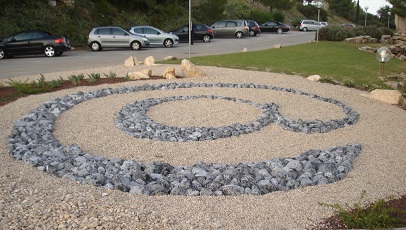
Looking ahead, Frantz hypothesized about monster markets set to replace the mobile phone, digital camera, MP3 player, and multimedia Internet device with a single convergent product. He noted that a euro today will buy you about a billion on-chip transistors, and asked what all of this real estate will be used for.
Frantz offered an answer: Smart Devices of all kinds, including medical – retinal implants, neuro-stimulators, gastric pacemakers, and cochlear implants – and energy harvesting gadgets that will convert widely available mechanical energy to electrical energy, and therefore power mobile devices of all shapes and sizes. This last was a great segue to the Wednesday morning Executive Panel: “Microelectronic Devices as Enablers for Saving Energy”.
** Executive Panel
Dr. Bernard Pruniaux, veteran of TI, Thomson, ES2, and Atmel, moderated the Wednesday morning session, with the distinguished speakers addressing a range of views, macro to micro, with regards to energy and microelectronics.
Schneider Electric Director Daniel Philippe showcased his company's devices for maximizing energy efficiency in commercial and/or residential buildings, as well as data centers. Pôle Capenergies Director Jean-Christophe Delvallet said his company is working with partners to develop a platform optimized for energy generation and distribution. To accomplish this feat, he said, “Microelectronics are critical!”
Sigma Orionis Director Roger Torrenti said there are multiple lessons to be had from working on the Smart Home. However, few people are really interested in retro-fitting their homes with power-grid optimization devices, because it's just downright expensive. Therefore, the market opportunity here is for applications for the home which are simple and inexpensive – and not just for first-world economies, but for emerging economies around the globe, which today appear be the most willing to jump in and attempt to optimize dwellings for energy usage.
Similarly, Orange Labs Senior Scientist Dr. Gilles Privat said his company's looking at networked sensors for energy management in the home, and think this particular category may be the next killer app in the electronics industry. Per Privat, a home that's been energy optimized can be seen as a “small grid”, while loads of integrated sensors are needed in that “grid” to load balance energy usage over a 24-hour cycle.
Also on the panel, ST-Ericsson Vice President Dr. Etienne Delhaye said the consumer wants more and more and more features on their mobile device, but the physicist – and everybody else! – thinks that the heat and power density on-chip is prohibitive to the parking of so many apps on the overworked devices.
In general, the Wednesday panelists agreed: Only through an optimized combination of software, hardware, and system architecture can we solve the feature & application demands versus heat & power problems of tomorrow's devices.
** The Chamber of Commerce
Of course, this is Europe, so a representative of the local Chamber of Commerce was given time on stage to point out that, in Europe the focus is on smart grids, load sharing, energy distribution, and the constant metering of energy consumption in the home and workplace. Cleverly building on the well-known microelectronics Triple Play, Compute-Communicate-Entertain, the spokesman said to look soon for the microelectronics Quintuple Play:
* Computing
* Communication
* Entertainment
* Energy Efficiency
* Highly available mobile apps
He added that, all of these lofty ideas notwithstanding, it's always the user experience which ultimately drives technology adoption, and creates those sought-after monster markets [read, “Profits!”]. Ergo, we need innovation in technology, as well as innovation in customer perception, if we want to drive energy management device adoption.
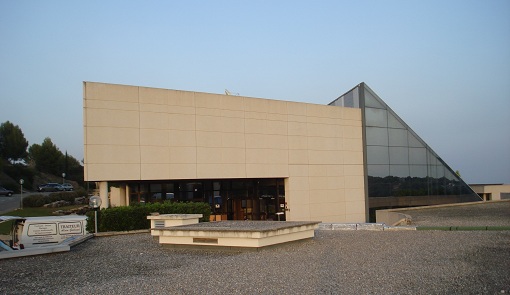
The SAME Forum audience audience was reminded that, although upwards of 80 percent of the power needs in France are met by Nuclear Power, the ultimate Smart Grid is going to need to include Sun, Wind, and Wave – sources that are admirably renewable, but not admirably reliable. Hence, energy load balancing via smart devices, and the energy-optimized home, are all the more important going forward. Additionally, when the price of energy for the homeowner varies over a 24-hour period, they've absolutely got to have automated systems to monitor and control energy consumption.
Per the speaker, current user interface issues will be resolved, and home owners will soon learn to see that benefits to their pocketbooks, and the environment, outweigh the occasional inconvenience of an energy optimized home.
** October 6th Startup Panel
The role of any “Startup Panel” is always to showcase the latest entries into a market. The Wednesday afternoon panel at SAME Forum 2010 was no exception. Here's some of what we heard from companies participating in that conversation on October 6th.
AnXplorer, out of India and now based in Silicon Valley, says analog/mixed signal design went from being hot in the 1980's, to being not so hot, to being hot once again today. Now more than 50-percent of chip respins are due to problems in the analog part of a design. AnXplorer wants to solve that, per Dr. Roddy Urquhart.
3ECO is a startup that designs with an “eye on the green.” Per Eric Louveau, there are always advantages to companies who maintain a strategy for optimizing environmental, technical, and economic factors simultaneously. The metrics evaluated in this effort should include – product life cycle, shelf life, and end-of-life product management.
Secure-IC, a SmartCard spinoff from the Institute TELECOM, develops technology to protect sensitive digital data and already has 50+ employees, per Hassan Triqui.
ESPHI produces a sensor that enables fitness belts, worn in the gym, to track various exercise metrics. Patrice Bendahan says the company is partnering with various gyms across Europe to implement the technology.
Riviera Waves describes itself as a “one-stop shop” for designing everything from software, to RF, digital hardware, IP, SOCs, design customization, and application development. The company is self-funded, per Ange Aznar – built on private capital with aggressive growth targets for the coming years.
GridPocket provides a “Personal SmartGrid Solution”, which promises to keep the consumer informed about home-energy usage. and provide energy demand response management. Per Filip Gluszak, his company is co-financed by the European Commission, and the Telecom/Paris-Tech incubator organizations.
ADEME is French agency that provides energy efficiency rules for industry. A spokesman for the agency ended the SAME Forum Startup Panel by reminding his audience that they should be bringing their microelectronics business to the Cote d'Azure: “Human energy in the Cote d'Azure derives from the small companies in the area!”
** Advanced Packaging Technologies
As everyone knows, the industry trend is to smaller, denser, faster, cheaper – the push to get there was at the core of the Wednesday afternoon session at SAME Forum 2010.
Per Cadence Sr. Technical Leader Patrick Dos Santos, wire-bond technology emerged in 1990, flip-chips in 1995, stacked die in 2000, package-on-package with standardization emerged in 2005, and now we're watching 3D-ICs come of age. Required to meet this last challenge are things like assembly rule checking, automated etch-back, 3D design visualization, and die-stack editors, which per Dos Santos, can be a “real nightmare for those customers looking to find the optimal structure in terms of systems performance”
Nonetheless, Dos Santos praised 3D-IC solutions for reducing total wire length and delay, and for increasing power efficiency. He lamented, however, that along with the advantages come additional parasitics, thermal management and material expansion problems, as well as tough questions like: Do you use a flip-chip on top of package? Or do you put a chip on top with wire bond? Or do you use face-to-face dies with TSVs, knowing this option reduces interconnect delay, but precipitates massive heat dissipation headaches.
Per dos Santos, “Solving the problem of 3D means being able to find the right methodology to [reach the] best product in terms of size, performance and cost. [Hence] for Cadence 3D is something that we need to take care of!”
Apache Principle Product Engineer Jerome Toublanc noted: “In the past, when I was supporting IC designers, we never talked about the package. Now, however, the package team sometimes drives design decision on an SOC.”
Toublanc said that package design is now part of the overall complexity associated with product development. He added that Apache is focusing on two main areas – advanced 3D design and IC packaging: “Today you have to have the ability to work at the die level, but with the full context [of the chip in package] always in mind.”
Amokor Technology Director Moody Dreiza showcased an eye chart full of different package types and said, “We went from a 1D-package point of view in the 1980's, through to a 3D-point-of-view by by the mid-2000s.” Dreiza noted that today, everything from the simplest of low-costs packages, to the most complex and expensive, is available.
He described a typical package: The top package typically contains high capacity or combo-memory devices. The bottom package typically contains a high-density logic device, but it might also have stacked die which combine logic and flash memory, or analog and digital components – often from different vendors. Dreiza noted that the pull today in the industry is between the 3D-IC and the SOC, the stacked die versus the package-on-package. Again, he said, the tradeoffs have to be taken into consideration.
Insight SIP CTO Chris Barratt was up last, discussing miniaturization and RF IP design. He said there are multiple technologies under review – organic laminate, LTCC, IPD, stacking, bumping, wire bonding – all of which are supposed to yield “More of Moore.” He went on to describe various Insight SIP products, and noted that “all of what we do is based on a design methodology.”
He added that tradeoffs in cost, reliability, performance and time to market help companies choose between current options. Barratt also delineated the heterogeneous options versus the 3D TSV solutions, and predicted that in 2012 the cross-over between the two will occur. He warned that vendors and customers will need “to be very careful to know at what point, and in which market, the cross-over is going to take place.”
** 3D Glasses at SAME Forum 2010
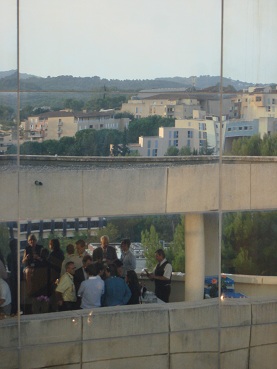
There was a super, special event at SAME Forum on Thursday afternoon – widely attended and enjoyed, even though the presentation was all in French. [Note to self: Please learn to speak French!]
Paris-based Volfoni provided sample 3D eyewear for everyone that was far more advanced than those ”passive” glasses you're given when you enter a theater to see movies such as Avatar. Volfoni 3D “active” eye wear are battery powered to provide a high quality image that's filtered for each eye sequentially. It's linked to the image on the screen, so at no time are both of your eyes looking at the image.
The result – confirmed by the SAME Forum 2010 audience in the room – is “optimal comfort and a robust electronic experience with high autonomy.” More importantly, it was so much fun and everybody loved it!
** Cochlear implant Tutorial
Active Implantable Medical Devices [AIDMs] were the subject of a special tutorial on Wednesday afternoon at SAME. Neurelec's Nicolas Veau spoke for an hour about the physiology and engineering behind his company's cochlear implant product, a type of AIDM.
Veau started by defining various categories of AIMD: brain stimulators, which might be used for a baby who is born without any auditory capability, or to help ward off epileptic episodes; heart stimulators, such as pacemakers and defibrillators; AIMDs used as sensory or functional prosthesis for debilitating diseases such as diabetes; and AIMDs for automated drug deliver for chronic disease therapy. AIMDs can also extend the life of the patient by monitoring vital signs and, thus “decreasing the societal cost [of disease] by improving patient autonomy.”
Having proved that AIMDs are important, Veau launched into a detailed description of the biology of the ear – the external ear as antenna and amplifier, the middle ear for impedance matching and automatic gain control, and the inner ear as analog-to-digital converter that interacts with a delicate series of bones displaced when the tympanic membrane vibrates.
The basic engineering behind a cochlear implant replaces the external and middle ear with a series of microphones and DSPs, while the inner ear is mimicked by an array of electrodes. Once implanted, these devices may stay inside the ear for upwards of 20 years – a level of shelf life which demands high levels of system and data-transfer reliability.
With that introduction, Veau said Nuerelec's cochlear implant assists failures in the inner ear, particularly congenital defects which prevent the translation between sound [mechanical] and signal [electro-chemical]. He noted that the ideal product life cycle for a cochlear implant starts with a simple surgery and brief hospitalization after inserting the highly miniaturized device, then a few doctor visits, and finally only the occasional maintenance surgery to replace a part that may have failed.
Microelectronics are obviously the greatest enabler for AIDMs, but the elegant simplicity of these devices should not hide the ongoing challenges of implementation, per Veau. Quite a few of the delicate components in a cochlear implant cannot tolerate electronic interaction with nearby devices, and therefore require highly engineered encapsulation schemes.
In addition, there are mechanical control consideration, the potential toxicity of the microelectronic materials, and complex tissue-impedance measurements that must be taken into account over the life of such a device. Per Veau, “This product will stay a long time in the body. Therefore, the tissues will grow around the sensor [causing] the tissue impedance to increase over time.”
Summarizing the daunting challenges, Veau said a cochlear implant doesn't ask for much – just high reliability, low noise, low power, automatic gain control, a low profile, small volume, compliance with standardized helium leak tests, and “a strong testing protocol before the device is implanted.”
Veau noted that backup systems for safety, titanium casings with “feed through”, and considerations of capacity-versus-charging times are all part of the complex engineering brought to bear on these devices today. He also said the industry needs better optimization tools to seek out the ideal design and looks forward to the emergence of such tools.
Additionally, Neurelec would like “to re-purpose our designs for other physiological functions,” but with little data on EM propagation in the body, that kind of design reuse is limited. Modeling tools such as MatLab meet part of the need, per Veau, but a whole host of additional tools would help improve reliability and resolve complex engineering trade-offs.
** October 7th Keynote
Thursday keynoters included Pierre Garnier, Vice President & General Manager of the Baseband Business Unit at Texas Instruments, and Joachim Kunkel, Senior Vice President & General Manager of the Solutions Group at Synopsys.
Per Garnier, Sophia Antipolis is “the most beautiful scientific park on the planet,” but those who who work there must not lose track of the fact that “global competition is relentless!”
Garnier defined the global TI global ecosystem – 300+ software vendors, 50+ service partners, a diverse IP portfolio, and various OMAP technology centers – and said it's this kind of corporate structure and cooperation that's required to succeed in the ferociously competitive semiconductor industry today.
Given the “strong revolution, as the Internet goes mobile,” Garnier said companies must rush to leverage the resultant opportunities, things such as local processing power via cloud computing. Noting that TI has been working on convergence issues for several decades, Garnier added: “Thanks to that convergence, we now have the power of a computer in our hands!”
Garneir said to build on the prospect of a billion+ mobile phones by 2013, Texas Instruments, like all players in the market, “needs a local ecosystem to enhance innovation.” Per Garnier, the Sophia Antipolis ecosystem happily includes companies such as Ericsson, Intel, and TI. All of these companies, and their R&D partners in the region are working to improve the “on-the-go user experience.”
In his keynote, Joachim Kunkel said the word “relentless” describes the ongoing pressures on semiconductor companies to produce cheap hardware, so “the software guys will have a place to park their highly profitable software products.”
Kunkel noted that the same pressure is also applied on EDA vendors, who are asked to provide inexpensive, but highly effective CAD tools to the hardware guys, so they can in turn produce cheap hardware for the software guys. He concluded that software development within the larger design chain requires attention to everything including applications, middleware, operating systems, devices drives, and design tools to create the ICs that are the basis for all of it.
Kunkel acknowledged that hardware traditionally was developed in the semiconductor company, while the software was developed, but that situation is changing radically today, and at a lightning pace, and companies need to respond.
He then cited a Synopsys case study: A successful customer engagement where Synopsys Virtual Machine software analysis enabled a complete evaluation of the Android Power Management features in the product, even before the hardware was available. Per Kunkel, “Virtual prototypes allow everyone in the world to launch their software with their hardware, which in turn leads to higher quality and better integrated products.”
** Additional talks
Following the keynotes, a series of brief talks were presented on Thursday morning by members of Pierre Bricaud's Executive Panel. Summarizing ...
Infineon Vice President & General Manager Stephan Klinger warned, Tomorrow's coming!
In response, he said the Sophia Antipolis Mobile Ecosystem Platform Initiative [MECPI] has been launched, which “starts from the entrepreneur and supports his project, though regional competences. The structure will provide access to mobile platforms for major players in the area, and expert coaching to support development. With MECPI, now the Sophia Antipolis ecosystem is ready to do battle with global high-tech competition!”
Referring to Klinger's slides: “Major players in the microelectronics industry installed in Sophia Antipolis have decided to analyze how to regroup forces in form of collaborative projects to help stimulate an ecosystem around mobile applications that can leverage ...
* Local presence of major players [TI, ST-Ericsson, Intel, Infineon, Insight SIP, ARM]
* Potential of small-to-mid size partners
* Presence of universities and research labs [UNS, INRIA, Eurocom, Paris-Tech, CNRS LEAR]
* Well-established regional organizations [TelecomValley, Pole SCS, CCI, SAME, ARCSIS]
Intel's Thierry Cammal said, The current landscape worldwide includes 1.2 billion Internet users, over 4 billion connected devices, and ubiquitous connectivity. MECPI is integrating efforts on the part of universities, governments, and startups to meet the needs of that landscape.
Pole SCS General Manager George Falessi defined France's SCS Cluster Vision: To be recognized, key innovative players in Secure Communication Solutions.
ST-Ericsson's Hugues Dailliez concluded: “This is the beauty of Sophia Antipolis. We have Intel, TI, Infinion, ST-Ericsson, and many others developing hardware platforms for advanced software, all in this ecosystem!”
******************************
Final notes from Sophia Antipolis ...

Although not an exhaustive recounting of all of the ideas and people on the scene in Sophia Antipolis in October 2010, there's enough here for you to understand that SAME Forum is a pivotal venue for ongoing conversation about the future of microelectronics. Undoubtedly, SAME will continue to play host each year to a stimulating and agitating group of technologists – from France and other locales around the world – because there's lots to learn in this place where ideas, and good living, are valued in equal measure.
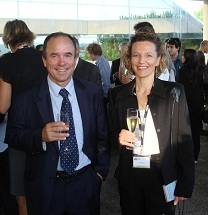
At SAME, it's possible to see that the competition for global dominance in the semiconductor industry goes on and on and on – complete with its attendant innovation, nerves, frustration, and exhilaration.
More importantly, in Sophia Antipolis, it matters not if the conversation about that race for dominance is conducted in French, English, or any other language.
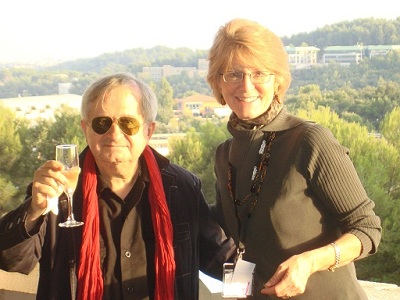
It only matters that the conversation continues, and that the innovation spurred on by that conversation also continues – unabated and in perpetuity.
SAME Forum contributes to the conversation, and I'm happy to have had the chance to hear that discussion first hand.
___________________________________________________________
Peggy Aycinena owns and operates EDA Confidential:
www.aycinena.com
Copyright (c) 2011, Peggy Aycinena. All rights reserved.